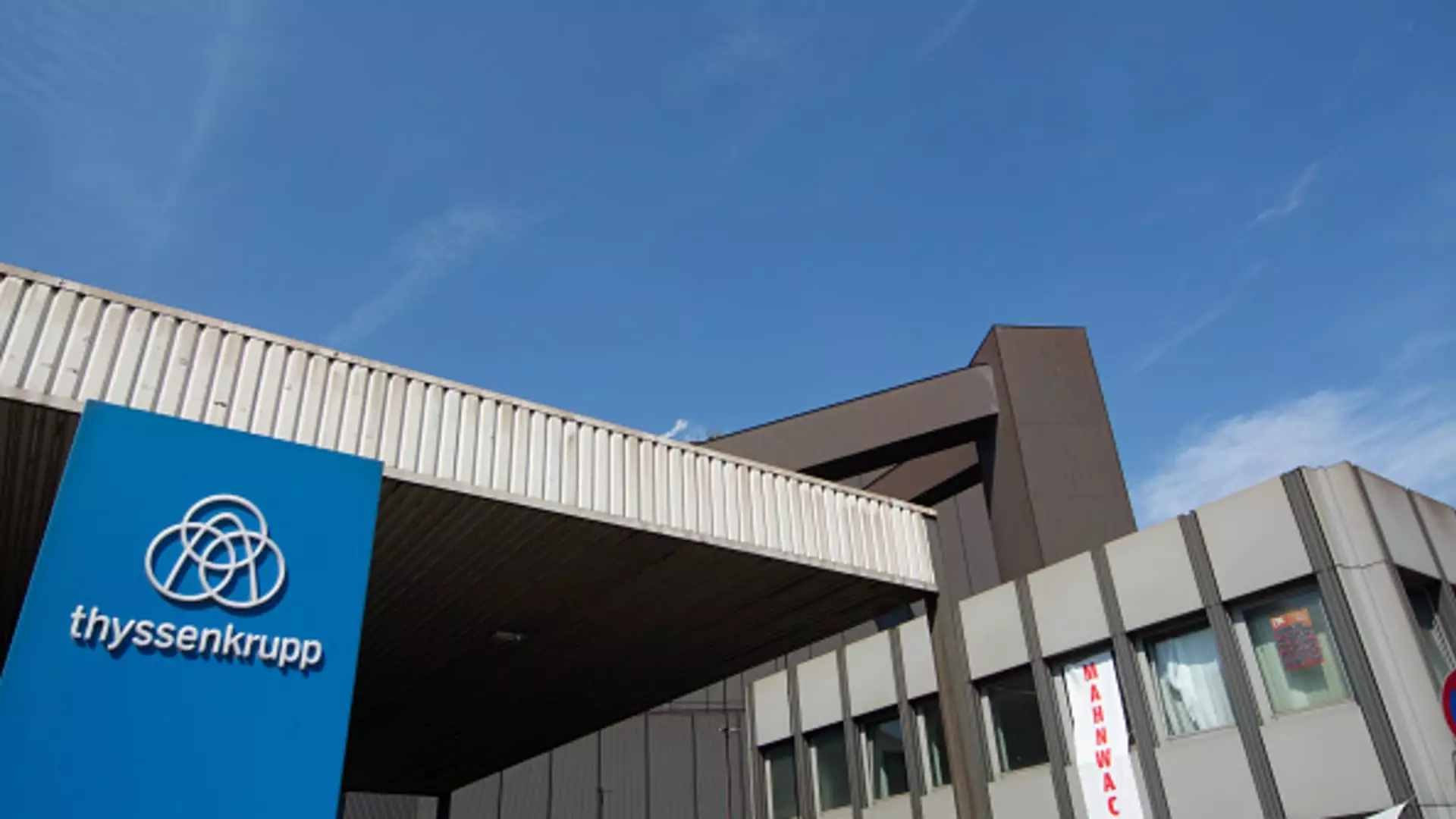In a climate of financial unpredictability, Thyssenkrupp has garnered attention following its recent announcement that highlighted a narrowed net loss, raising investor hopes. The shift in its market position was palpable on Tuesday, with shares of the beleaguered German industrial giant surging by approximately 7.9% shortly after trading commenced in London. This uptick is emblematic of market confidence as the firm reported adjusted earnings before interest and taxes of €151 million for the fourth quarter, surpassing analyst expectations of €120 million, according to a report by Reuters. This performance signals a potential turning point for Thyssenkrupp as it navigates the challenges posed by its struggling steel division.
Despite the positive quarterly results, Thyssenkrupp is still mired in losses. For the fiscal year ending September 30, the company recorded a net loss of €1.5 billion, a significant improvement from the previous year’s €2 billion loss. This reduction can largely be attributed to substantial asset impairments, which totaled around €1.2 billion. Notably, a staggering €1 billion of this figure stemmed from the company’s Steel Europe segment, underscoring the persistent challenges this division faces. The plight of Steel Europe, compounded by a shifting global landscape and increasing input costs, remains a core concern for the company’s overall viability.
CEO Insights and Future Directions
In his assessment of the fiscal year and its implications, CEO Miguel Lopez elucidated that the current year is critical for making pivotal strategic decisions, particularly concerning the steel and marine sectors of the company. He emphasized the necessity for Thyssenkrupp to not only improve its operational efficiency but also capitalize on the burgeoning opportunities presented by the green transformation. This aligns with global trends as industries worldwide are increasingly focused on sustainable practices. The firm’s commitment to optimizing performance across its varied business lines is indicative of a proactive approach in an ever-evolving market.
Thyssenkrupp’s restructuring initiative, particularly the separation of Steel Europe into an independent entity, is a decisive move aimed at streamlining operations and enhancing focus. The recent divestment of a 20% stake in this division to the EP Corporate Group demonstrates a strategic alignment with external partnerships that may bolster the firm’s recovery efforts. Additionally, ongoing discussions surrounding the formation of a 50:50 joint venture with EPCG reflect Thyssenkrupp’s keen interest in harnessing collaborative synergies, particularly in challenging economic conditions.
Challenges Ahead: Economic Climate and Stakeholder Engagement
Despite these strategic initiatives, Thyssenkrupp must contend with broader economic issues that have been beleaguering Germany. As the nation grapples with diminished business activity and governmental instability—a ruling coalition collapse has raised concerns—Germany’s status as an export-driven economy is under strain. The subdued global demand for industrial goods poses a formidable challenge that Thyssenkrupp, along with other firms in the sector, must navigate. Engaging effectively with stakeholders and aligning organizational strategies with market realities will be essential in the forthcoming period.
While Thyssenkrupp’s recent financial reports and strategic decisions reflect a management team grappling with significant challenges, the company’s path forward requires astute navigation of both internal restructurings and external economic pressures.

